How to Add Body without Ever Hitting the Gym, meet the Lagrein grape…..
As winemakers, we have all had a red wine that feels a little thinner in the mouthfeel than we would care for. It may feel thin bodied and slightly flabby. How does a winemaker address this issue in their wine? Unlike people, we can’t send the weak bodied wine to the gym to bulk up, but we can introduce the wine to Lagrein. Lagrein is a red wine grape that originates from the northern valleys of Italy. It has been used to create very aromatic rosés and incredibly full bodied red wines. It has a higher level of acidity and a lower pH factor than many red wines, making it an excellent blending wine. When vinified on its own, Lagrein has a lot of intense, chewy tannins and flavors of plum, tobacco, and an earthy minerality.
When making a stand-alone Lagrein, (or to be used in a blend later), it is suggested that the winemaker may choose to have a limited maceration time for this grape variety. The important and prevalent grape tannins are hydrolysable and will be extracted into the must within the first few days of fermentation. The stronger, bitter seed tannins will be extracted in the accumulating ethanol later on in the fermentation, giving cause to the winemaker for an early pressing. BDX yeast strain will help to create a smoother and rounder mouthfeel, given its propensity for soft tannin extraction. Another excellent yeast for this varietal would be D80 as it will enhance palate volume, finer tannin sensation, and brings out the spicy flavors within the Lagrein grape. Fermentation aids such as Booster Rouge and Opti-Red will help to lock in the color and preserve the longer chain, smoother grape tannins with in the Lagrein grape. The winemaker can chose to add oak dust or fermentation tannins, but with the tannic intensity of the grape, it may not be as crucial as with other varietals. We always advise to use a complete nutrition program throughout fermentation, including the use of Go-Ferm, Fermaid O, and Fermaid K. This will help avoid any stuck fermentations and off aromas.
Due to its intense tannic structure, the Lagrein grape is an excellent grape to blend with other wines to help build up their tannin structure. The winemaker can chose to add in a small percentage at crush to naturally fortify their primary varietal with additional tannins or to ferment a batch of Lagrein separately and then blend into other wines, post fermentation to add to their structure or mouthfeel. With its bright acidic character and higher tannin content, it can greatly add the attributes to any red wine. Having a small amount of Lagrein wine in the winery, maybe the perfect finishing touch to some of your other wines. It can add such strong structure and body to a red wine blend, it can be a useful “secret ingredient” to fortify the body of red wines. Incorporating Lagrein, your wine will feel like it has “hit the gym” without ever having to leave the winery. If only it were that easy for the rest of us!
Ger-whaaaat? You may not be able to say Gewurztraminer, but here is why you should be making it.
Gewurztraminer is an aromatic German varietal that has been twisting tongues of wine enthusiasts for decades. Only in the past decade has Gewurztraminer been making a more consistent appearance on wine lists and in wine stores. With interest in not just sweet, but complex, sweeter wines trending amongst millennial drinkers, varietals like Gewurztraminer are seeing a surge in their popularity.
Gewurztraminer is a grape variety that is originally from the Alsatian region of France, on the German border. Its attractive pink to light red color of its skins was thought to be a genetic mutation of the Red Traminer grape of Germany and Northern Italy. Its name comes from the German “Gewurz”, which means “herb” or “spice”. When sipping Gewurztraminer, it is easy to see the development of its name, as the grape is famous for its floral, slightly herbal, and spicy aromas. Upon vinification, the grape often has large aromas of lychee, rose petal, white pepper, and passion fruit. The varietal is most well-known for its intense aroma. Even small amounts, when added to a blend, will greatly enhance complexity of the aroma.
When making your own Gewurztraminer, Musto Wine Grape imports Gewurztraminer from the Central Valley of CA. This premium grape growing region generates a ripe, bold example of Gewurztraminer. The grapes average around 24-26Brix upon arrival, with appropriate, refreshing acidity. We would suggest using Vin 13 or R2 yeast to enhance the varietal character and to help promote the fruity and floral aromas that the Gewurztraminer is known for. The addition of supplemental yeast nutrients such as Booster Blanc and Opti-White will help to preserve the intense aroma for long term enjoyment and a small addition of FT Blanc Soft can help to increase the mid-palate volume and intensity of flavor. We always advise to use a complete nutrition program throughout fermentation, including the use of Go-Ferm, Fermaid O, and Fermaid K. This will help avoid any stuck fermentations and off aromas. Gewurztraminer will not benefit from malolactic fermentation.
The intense perfume-like aromas and luscious tropical flavors found in Gewurztraminer make it an excellent pairing for spicy food such as Asian cuisine or Indian Curry. It is a refreshing patio sipper with such an astounding aroma, it is guaranteed to impress anyone who you may pour it for.
by the Winemakers at Musto Wine Grape
Musto Wine Grape Harvest Update – Brix Levels, Harvest Dates, and Delivery Dates
Hello Winemakers,
We have a lot to update you on. But first and foremost – Our first loads of grapes will start to arrive the week of September 10th. Think white wine grapes such as Pinot Grigio, Albarino, Viognier, Muscat, Thompson Seedless, Barbera, and a few other early red varieties. Our first load of juice should be arriving around September 6th with limited varieties.
We are seeing Brix numbers creep up in every AVA.
Lodi: Zinderella Zinfandel should be picked around September 8th. They are currently at 18 Brix.
Suisun Valley: We are at about 16-18 Brix depending on the variety.
Central Valley: We are anywhere from 17-22 Brix depending on the variety.
Paso Robles: Pinot Noir is around 18.5 Brix.
Contra Costa: Aglianico is around 18.2 Brix
Washington State: The Pinot Noir is around 20 Brix and the other varieties are still going through verasion.
King’s River: Tempranillo is at 21 Brix.
For up to date/real time information please refer to our Facebook Page – https://www.facebook.com/MustoWineGrapeCoLLC/ or email cmusto@juicegrape.com with questions.
Interested in Juice?
We should have our full line of juice pails by September 10th. The Fresco juices and Italian juices are set to arrive in mid-October. We will keep in touch with those who have pre-ordered. Remember Fresco juices are pre-order only.
Classes – Seminars – Events
- Saturday September 8th at 9:00AM-4:00PM: Making Consistently Flawless Wine Seminarwith Daniel Pambianchi. In this seminar, you will learn the intricate interplay and management of oxygen, sulfur dioxide, and polyphenols, and clarification and stabilization techniques towards making greater wines more consistently and flawlessly. The seminar will also demonstrate how to measure and control oxygen and sulfur dioxide in wine.
- Saturday September 8th – 8:00AM-1:00PM: Customer Appreciation Day – Hello Winemakers! We hope you have enjoyed your summer. We are looking forward to getting back into the winemaking groove by hosting a Customer Appreciation Day on Saturday September 8th from 10:00AM to 1:00PM. The event will feature wine information from our growers in California and Farm to Table Appetizers. We hope to see you there to help us kick off the 2018 Harvest Season! Please RSVP to cmusto@juicegrape.com.
- Saturday September 15th at 10:00AM: Winemaking 101: Intro to Wine Making. This program primarily covers the basics necessary to understand the art and science of making wine. Students should leave the class with an overview of the winemaking process and prepared for a hands-on experience.
- Saturday September 22nd at 10:00AM: Winemaking 201: Winemaker Lab Skills: This program primarily covers laboratory skills needed in the art and science of making wine.
- Saturday October 13th at 9:00AM: Winemaker Bootcamp: You’ve asked for it and once again, we’ve responded. The only hands-on winemaking bootcamp in the area. No need to spend thousands. Musto Wine Grape Company is pleased to announce the start of a five week class for beginner winemakers in the art and science of making wines. This course offers each student the opportunity of experiencing hands-on winemaking and producing their own five gallons of wine by the end of the semester. In addition to actually making wines, the course will cover the science behind modern wine making and fermentation techniques including additives commonly used by commercial wineries throughout the wine making world. Classes will be about 3 hours each Saturday, starting at 9:00 am, in the offices and winemaking showrooms of Musto Winegrape Co, 101 Reserve Road, Hartford, CT, 06114.
Make sure to keep track of our blog posts and Harvest Tracker..
- Rich Soil + Cool Delta Breezes = Delicious Wines from Lodi’s Historic Vineyards
- Top 3 Vineyards for Pinot Noir
- Zinderella Old Vine Zinfandel – The Perfect Fit
- Working with Italian Wine Grapes
- Harvest Tracker – Harvest Menu
We are looking forward to working with you this fall. Get those crushers and fermentation vessels ready, harvest will be here before you know it!
Sincerely,
The Musto Crush Crew
Rich Soil + Cool Delta Breezes = Delicious Wines from Lodi’s Historic Vineyards
Did you know that the first wine grape in Lodi was planted in the 1800’s? Or that Lodi produces over 450 wine labels? 4th and 5th generation growers are taking their historic vineyards to new levels by introducing sustainable growing practices, planting interesting wine grape varietals, and producing block specific wines.
The Lodi AVA was created in 1986 and the farmers here have been growing and developing their winemaking and vineyard plantings ever since. With over 75 different grape varieties planted in Lodi, there is no shortage of interesting high quality grapes. According to the critics the top grapes coming out of Lodi are Old Vine Zinfandel, Cabernet Sauvignon, Merlot, Chardonnay, Rhone varietals, and Italian varietals. Many of the wineries in Lodi enjoy working with their grapes because they create wines that are complex, flavorful, and pair well with food. After all, wine was created to drink and enjoy with family and friends.
Musto Wine Grape is bringing in a diverse variety of grapes from Lodi this season. With a great price point and no shortage of options, Lodi is one of the most versatile and creative AVA’s for winemaking.
Winemaking Suggestions:
- Lodi Old Vine Zinfandel
- Lodi Cabernet
- Lodi Petite Sirah
- Contra Costa Montelpuciano
- Contra Costa is an area in Lodi that has a very similar microclimate to Italy. Italian varietals flourish here and come out similar to those grown in Italy.
- D-254; Ripe red fruit, jam, and mild spicy flavors, alcohol tolerance of 16%
- VRB; Ripe fruit, jam, plum flavors, softens tannins, alcohol tolerance of 17%
- BM 45; Fruit jam, cherry liquor, sweet spice, and cedar flavors, alcohol tolerance of 15%
Wine Grapes/Wine Juices Available:
• Alicante
• Barbera
• Cabernet Franc
• Cabernet Sauvignon
• Carignane
• Grenache
• Malbec
• Merlot
• Mixed Black
• Petite Sirah
• Pinot Noir
• Ruby Cabernet
• Sangiovese
• Zinfandel
• Old Vine Zinfandel
• Valdepena
• Albarino
• Balck Muscat
• Chardonnay
• French Colombard
• Malvasia Bianca
• Muscat
• Pinot Grigio
• Riesling
• Sauvignon Blanc
• Thompson Seedless
• Viognier
• Aglianico
• Montelpulciano
• Nero D’Avola
• Sagrantino
• Mourvdere
Christina’s Top Wineries to Visit in Lodi:
- Mettler Family Vineyards: Check on some of our favorite Lodi grapes and enjoy delicious wines.
- Lodi Visitor’s Center: Where you can taste Zinderella!
- Michael & David Winery: A great representation of the Lodi Appellation
- Peltier Winery: Delicious, interesting, Lodi grape and wine varieties
If you are interested in Lodi grapes or juices please give us a call at 877-812-1137 or email us at sales@juicegrape.com to secure your order. Cheers to the 2018 Winemaking Season!
Zinderella Zinfandel – The Perfect Fit
“The time has come to find an Old Vine Zin that is the perfect fit for every occasion. With a deep red color that beautifully inundates the glass, this luxurious Zinfandel immediately captures your attention….”
Get excited Winemakers because Zinderella Zinfandel grapes are coming to the East Coast. The Zinderella wine was inspired by perseverance and invigorated by a willingness to never give up on a dream, Zinderella embodies so much more than just wine. From the heart of the esteemed Lodi Appellation, a land recognized as the Zinfandel Capitol of the World; only select Zinfandel grapes that have withstood the test of time have been chosen. With deep, rich Zin flavors, each bottle of Zinderella is an inspiration to follow our dreams and create memories.
Who else is excited to create their own version of Zinderella? I know we are! The Zinderella grapes are sourced from one of our oldest vineyards in Lodi. These grapes are over 35 years old, head pruned and ready to create some delicious wines. We suggest using the following yeasts when creating your perfect Zin.
Yeast Suggestions:
- CLOS: This yeast will ferment under tough conditions. It’s a great yeast if you don’t have good temperature control. It will help enhance aromatic structure and can handle a high alcohol tolerance (17%). CLOS helps highlight the intensity of the grape that comes with the vine’s age. Old head pruned Zinfandel vines produce some delicious and bold wines.
- RP-15: This yeast will help balance out the mouthfeel of your wine. If you are interested in a tempered Zinfandel then this will help bring out the bright red fruit characteristics along with mineral flavors. If you like your Zinfandel with a balance of fruit and earth this is the yeast for you. RP15 can handle higher Brix and will ferment up to 17% alcohol.
- VRB: Bring on the fruit bomb! VRB will help promote all of those fruit characteristics you love in your Zinfandel. Think ripe jam, plum, and raspberry; while softening tannins and rounding out around 17% alcohol. This yeast is great for those who want to create a bright and fruity Zin.
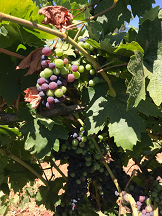 Zinderella going through verasion
Zinderella going through verasion
Our grower Paul has a quick update for us regarding the Zinderella grapes, “As you can see veraison has already happened, and now the berries are ripening and coloring nicely. This year’s 2018 wine grape crop is shaping up nicely for us! Overall fruit sets are slightly lighter than last year, but as we know, with lighter crop sets, it increase expectations of enhanced flavors and better total quality.”
Give us a call at 877-812-1137 or shoot us an email at sales@juicegrape.com to set up your order for the fall!
Top 3 Vineyards for Pinot Noir
If you love a good Pinot Noir, then this the blog post for you. We will be bringing you Pinot from multiple vineyards this fall! Check out our options and winemaking tips below.
Lodi Pinot Noir:
Whenever I think of Lodi Pinot Noir the song “Cherry Bomb” by The Runaways pops into my head. This because Lodi Pinot’s can be a wild mix of cherry, strawberry, with a touch of smoke. Hello world, your feisty Pinot has arrived! Many people have argued that Lodi is too hot a region to grow Pinot Noir and I disagree. If you are interested in a fruit forward Pinot Noir these are the grapes for you.
Region Specifics: Our Pinot Noir grapes are sourced from the Mokelumne River of Lodi, the coolest AVA in Lodi. This region has a similar weather pattern to the Mediterranean climate of the Northern Costal California regions. This is because the eastern facing river brings in cool air from the ocean, creating the cool nights and moderate temperature swings that Pinot Noir loves.
Winemaking Suggestions: We suggest using RC 212 yeast during fermentation coupled with the proper nutrients. RC 212 is known for its ability to generate ripe berry, bright fruit and spicy characteristics and to consistently produce Pinot Noir with good tannin structure. Make sure to watch your temperatures during fermentation in order to ensure a great bouquet.
Paso Robles Pinot Noir:
Paso may be known as the “Rhone Ranger Region” but it boasts some delicious Pinot Noirs. These Pinots are delicate, earthy, and full of spice. If you’re looking to create a Burgundian style Pinot Noir these grapes will get your there. Notes of raspberry, cedar, cassis, and tobacco will jump out of your glass.
Region Specifics: Our Pinot Noir is grown on the West Side of Paso Robles. The Westside is full or rolling hills and cool breezes swooping in from the ocean. These moderate temperatures give Pinot the ability to mature to its prime complexity. The soils are calcareous containing high levels of calcium and magnesium carbonate. These nutrients create wines with good structure.
Winemaking Suggestions: We suggest using BRL97 in order to retain the beautiful color of these grapes. BRL97 is moderate fermenter, so it is a good yeast to use if you have trouble keeping fermentation temperatures at bay.
Washington State Pinot Noir:
If you like to nerd out on Pinot Noir clones we have a few to choose from coming out of Washington. Our grower Jeremey is sustainably cultivating multiple clones of Pinot Noir in the Rattlesnake Hills AVA. One of our winemaking groups in NY worked with these grapes and gives you great information on the clones and his winemaking experience. Click here for the post.
Region Specifics: This Pinot Noir is Own Rooted. An Own-Rooted vine is a vine that has no rootstock. This is not common in most wine regions around the world. The rootstock & vine grafting was necessary at one point to protect from specific diseases such as Phylloxera. The Washington soil type is made up of a fine silt loam which Phylloxera hates – this is why they can plant Own-Rooted vines.
Winemaking Suggestions: We suggest using 71B or RC212 yeast during fermentation. 71B metabolizes malic acid, helping to regulate the TA and pH balance. It also helps ensure the flavor profile of the grape shines through fermentation. . RC 212 is known for its ability to generate ripe berry, bright fruit and spicy characteristics and to consistently produce Pinot Noir with good tannin structure.
Embracing Our Roots: Making a Traditional Italian-Styled Wine from California Grapes
Very few locations in the world have such a long standing tradition for making fine wines as Italy. They are famous not only for their superior quality, but for their techniques and fervent passion for wine making. Hundreds, if not thousands, of years of experience have cultivated some of the most premier wine grapes on the planet, generating complex, benchmark wines. Winemaking has become iconic to Italian culture and the generations of Italian immigrants around the world.
While many of us may hold dreams of traveling to Italy to help create some of these wonderful wines, making it a reality was not possible, until now. Through much research into climate and grape genetics, Musto Wine Grape can now source fresh grapes from select areas of California that have climates incredibly close to the Italian Mediterranean climate, comparable soil compositions, and exact genetic clones of the vines in Italy. The grapes can be crafted into wines that bear strong resemblance to their Old World counterparts.
Musto Wine Grape proudly sources authentic Italian varietals such as Nero D’Avola, Montepulciano, and Nebbiolo from the Contra Costa region of California. This wine growing region lies in a valley that borders on the north and west side by the Suisun Bay and San Pablo Bay, respectively. The bays create a more temperate climate, with cooler days and nights that allow for gentle and even ripening of the grapes. The alluvial plains and ragged coastline created by glacier movement, is remarkably similar to that of the Italian coast. The mineral-rich, alluvial plains contribute to a complex fruit, full of sweet berry yet earthy notes, in more of an Old World style. The gravel laden and sedimentary soils created by the glacial movements creates excellent drainage for the grapevine roots, causing them to grow strong and deep. This generates a very concentrated fruit, akin to the grapes in Italy. The more concentrated fruit is an excellent candidate for extended maceration or the ripasso method, two traditional techniques in Italian winemaking. The ripasso method originated in the Veneto region of Italy as a means of creating Amarone. Grapes are partially dried, concentrating their sugars and flavors. After the drying period, grapes are then pressed, the contents added to enhance Amarone. The wizened, yet not fermented skins are then added to the processing of Valpolicello and Montepulciano, hence deriving the name “ripasso” or “passed over”. These skins add a lot of extra tannin and concentrated flavor to the must, contributing not only to flavor but to the body and mouthfeel.
Not only does the terroir of Contra Costa greatly lend itself to the more Old World profile of these varietals, but the microclimate of the area contributes as well. As previously mentioned, the Contra Costa valley is surrounded on two sides by bays which help moderate the temperature. Having more moisture in the western winds generated off of the bays, provides adequate light hydration to the plants, while still preserving the concentrated fruit. The more temperate climate allows for more even ripening of the grapes; a long a gentle growing season, similar to the Mediterranean. Mount Diablo (3,845ft) provides elevation to some of the vineyards, creating a gentle slope ideal for viticulture. Having the mountain slope will aid in drainage and sun exposure for the grapes, again creating a microclimate very similar to the Italian coast.
The beneficial conditions of the Contra Costa region as well as Suisun Valley to growing Italian varietals, gave the vineyard owners and managers much to consider upon planting. They understood the unique aspect of their growing region and worked to source the best genetic clones of the benchmark Italian varietals. Both valleys are also home to some of the premier olive groves in California, utilizing the Mediterranean-like climate for high quality production. At the Lanza-Musto Vineyards within Suisun Valley (a premier growing region contingent to Napa), the Primitivo clone of Zinfandel as well as the Brunello clone of Sangiovese were planted to yield grapes with a more traditional Italian flavor profile. These clones are direct relatives of the varietal clones planted in Italy and are pruned and trellised in a comparable style. Their yields are kept low, averaging 5-6 tons per acre, preserving a more intense, concentrated fruit with a rich, earthy character.
In Contra Costa, the Nebbiolo planted can be crafted into a traditional Barolo style wine, renowned as one of the greatest Italian red wines. The Nero D’Avola and Montepulciano varieties from this region also can be crafted into more traditional Italian styled wines, often complimented with traditional Italian derived yeast strains such as BM45, BM 4×4, and BRL97. These yeast strains have been isolated from long established wineries in Italy and propagated for commercial distribution by top yeast researching universities in Italy such as the University of Torino. The use of these strains with the grapes of these growing regions can bring a truly Italian winemaking experience into your winery and the Italian passion for winemaking into your heart.
by the Winemakers at Musto Wine Grape
Veraison in the vineyard and how it affects winemaking
Currently our grapes are going through veraison in California. Veraison occurs when the berry transitions into the ripening stage. From now forward the berry will increase in sugar concentration until it is harvested at the desired brix level. Grapes for sparkling wine or champagne are harvested around 17 brix and grapes for still wine are harvested around 25 brix. The brix level will determine the alcohol level in the wine. For example, a grape picked around 25 brix should create a 12.5% alch by volume wine.
Harvest will be here before we know it! It’s to time start getting organized. Click HERE to see our upcoming events and classes that will help you get ready for harvest.
Making Wine from King’s River Ranch Grapes
The King’s River Vineyard is located in Sanger, CA – Southeast of Fresno, on the way to Squaw Valley, Tahoe and the Sierra Foothills.
The vineyard is made up of 40 acres of white ash & sandy loam soil. The vineyard has been in existence since 1954 and the family has grown everything from grapes for wine and raisins to peaches, plums, and apricots on this little piece of paradise. However, they ultimately decided to focus on what they love most – boutique style wines. Each block is meticulously managed. They thin leaves, drop fruit to secure intense flavors, and drip irrigate as to not over-water the vines. This family definitely produces grapes of distinction.
Grape Varieties Available for Purchase:
Cabernet Sauvignon (Clone 337)
Petite Sirah
Alicante
Syrah
Barbera
Cabernet Franc
Tempranillo
Primitivo
Albariño
Muscat
Chenin Blanc






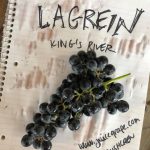
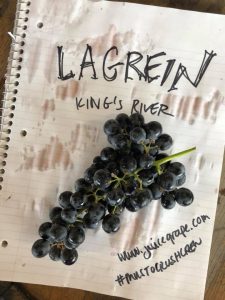
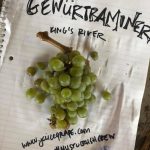
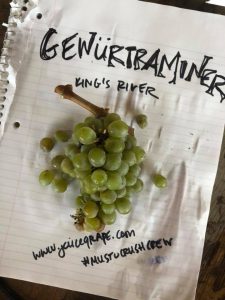
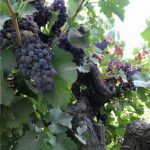
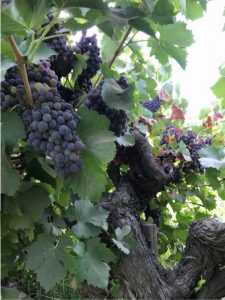
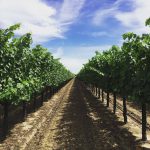
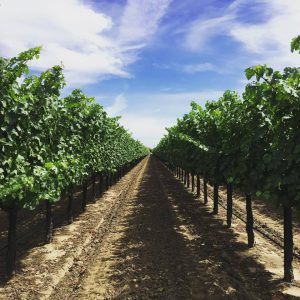
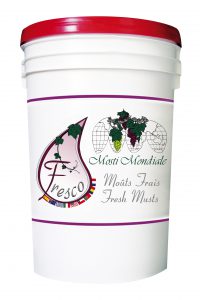
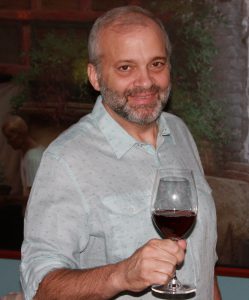
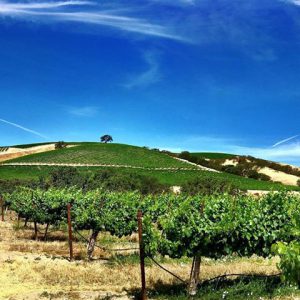
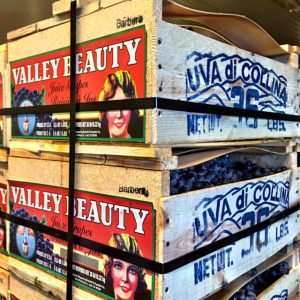
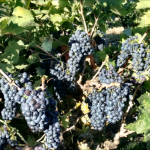
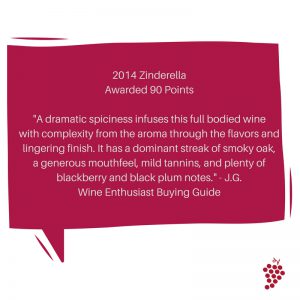
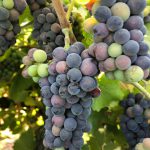
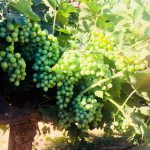
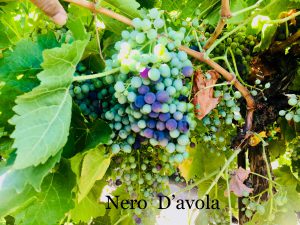
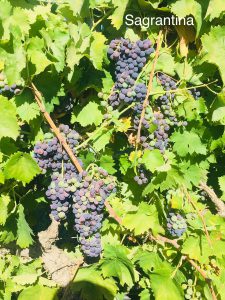
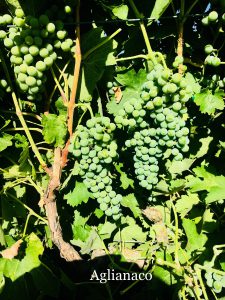
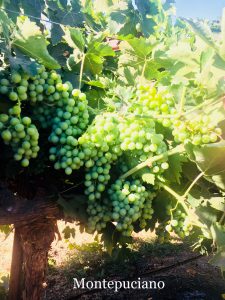
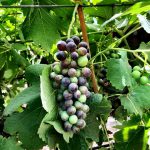
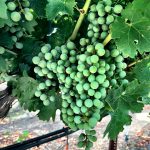
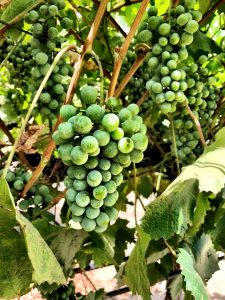
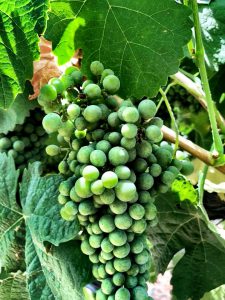
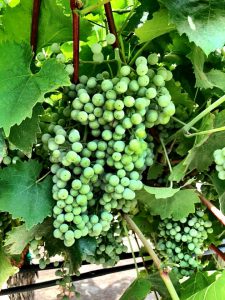
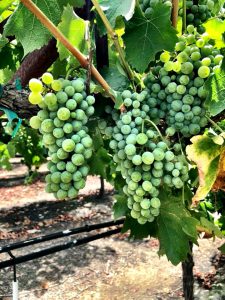
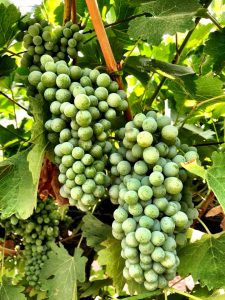
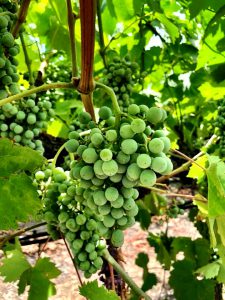
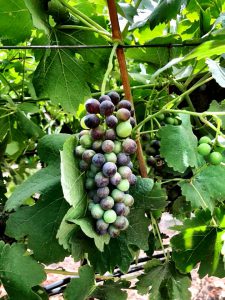
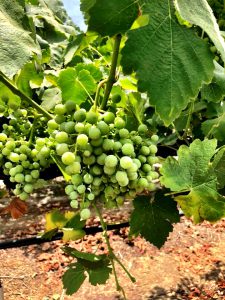
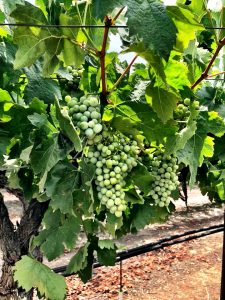
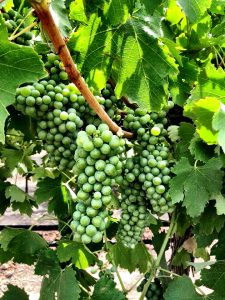
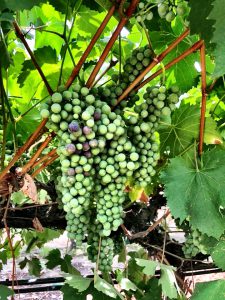
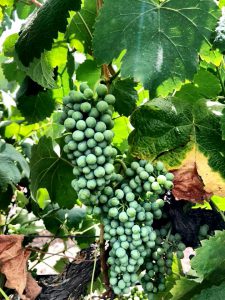
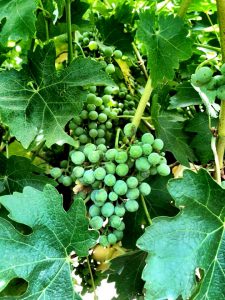
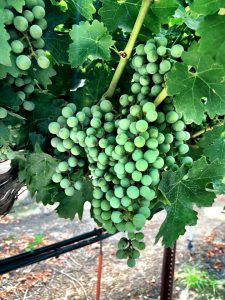





Recent Comments